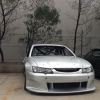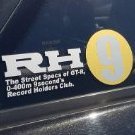Dry Sumps And You.......
Announcements
-
Similar Content
-
Latest Posts
-
Jump into the wasteland. Plenty of random posting/chatting going on in there.
-
I did not go to GTR Festival. It's quite a long drive and the car wasn't dialed in yet. I also wanted to see how the racing portion went before going. From what I can tell the classes were not heads up, index, or bracket - just whoever has the quickest ET wins. Never heard of that sort of thing before and maybe some people like it but it's not my cup of tea. I don't suspect I'll go if that is how the racing is done. I did get the car out three times and had issues each time. Some were my error - haven't raced the car in over two years - and others were parts. Had trouble getting the clutch to slip correctly and remembering how it was set up in the Haltech. Broke some drivetrain parts as well that couldn't be fixed in a couple days to get back out. Season definitely didn't end the way I wanted but at least the bearings are still fine! Not a fleck of material in the filter. Really hoping next year is the year I can actually test this car properly.
-
find it funny everyone claims different fuel chains, do different things with their fuel blah blah blah. We don't have that many fuel terminals in Australia. The fuel tanker trucks drive into the terminal, fill up, and drive directly to the service station and dump out. The majority of fuel you get, is coming out of the same terminals. The variation is actually at the individual service stations and how good their tanks are, as well as how much turn over they actually have. Older fuel stations, that haven't had their tanks replaced are going to end up with the worst fuel. Also a lot of older stations have shit design, and shit maintenance, and end up with more water absorption into the tank. This is when you then get a bad batch of fuel. Other shit things happen, like tanker drivers have a f**k up, and starting to unload the wrong compartment on their truck into the wrong tank.











Recommended Posts
Create an account or sign in to comment
You need to be a member in order to leave a comment
Create an account
Sign up for a new account in our community. It's easy!
Register a new accountSign in
Already have an account? Sign in here.
Sign In Now